The Brooklyn Bridge—the world’s first steel suspension bridge—is a beloved landmark and a cultural icon of NYC which is frequently celebrated in art, poetry, song, and film.
Its completion in 1883 marked a pioneering feat in engineering, distinguished by its iconic Gothic-style towers, and held profound historical significance as it physically united Manhattan and Brooklyn across the East River.
Overall, it stands as a significant symbol not only for New York City but also globally, and walking across it something everyone visiting the city should do. Read along to learn more about this incredible NYC landmark, and tips for exploring it.
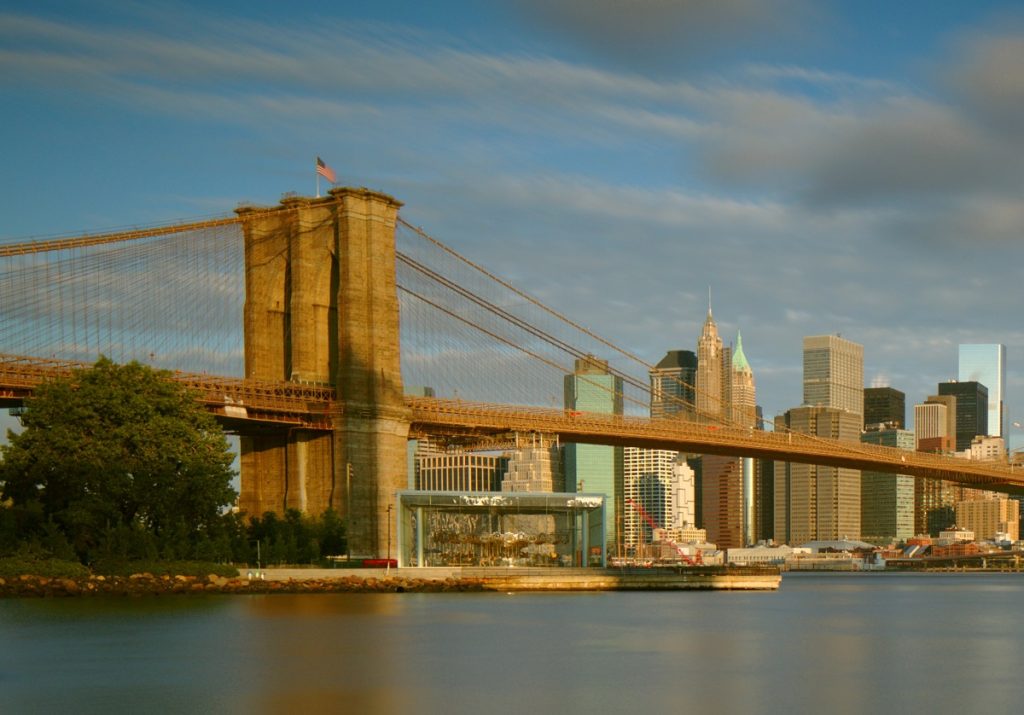
The Brooklyn Bridge: Quick facts
Spanning the East River, the Brooklyn Bridge connects Manhattan and Brooklyn. It’s 5,989 feet (1.825km) in length and soars 119 feet (36.27m) above the river. Its two granite Gothic towers rise 276.5 feet (84.27m) above the water.
The roadway platform is hung on steel suspenders strung from four thick cables, each made of 5,296 galvanized steel wires bound together and anchored on both shorelines.
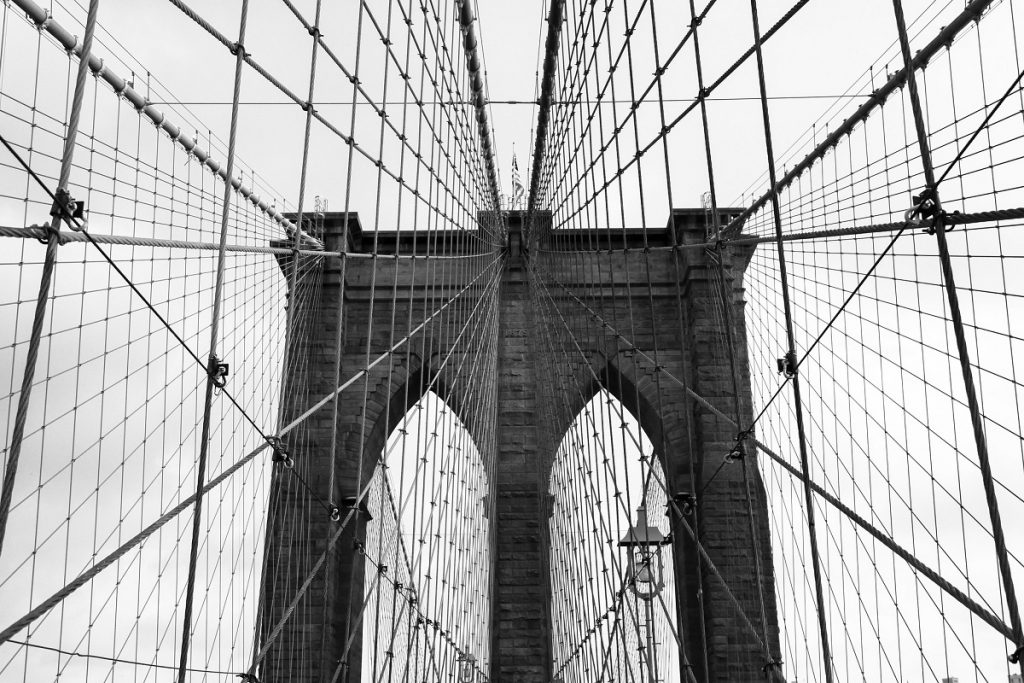
History of the Brooklyn Bridge
In 1867, one-third of the workers in Brooklyn (then the nation’s fourth-largest city) worked in Manhattan. The only way to reach the island was by boat, and the river sometimes froze solid, stranding commuters and isolating both cities.
That same year, a plan for a massive bridge was approved. It was designed by John A. Roebling, an engineer who made a fortune pioneering the manufacture of wire rope made from a new type of metal: steel.
Building the bridge was an enormous undertaking, as it had to span the half-mile river (the busiest waterway in the world at the time) and be tall enough to allow clipper and steam ships to pass beneath.
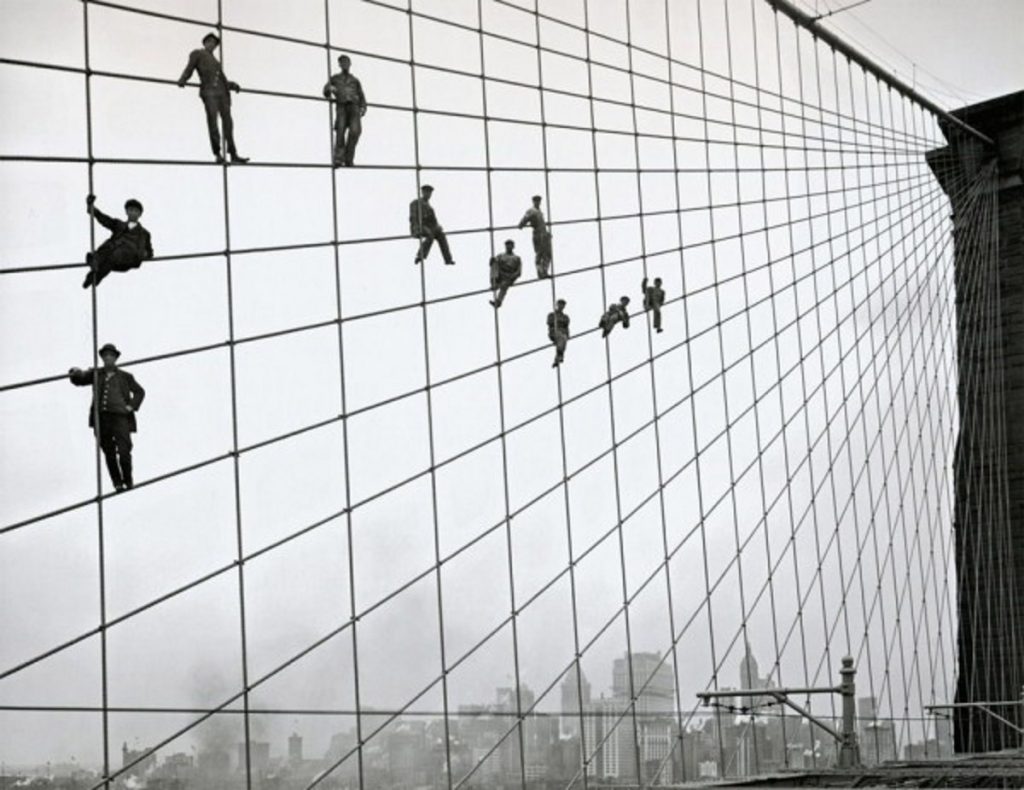
Construction took 14 years and claimed 27 lives, the first being Roebling himself who died of tetanus after his foot was crushed by a ferry (which, ironically, his bridge would put out of business). His son Washington Roebling then took charge of the mammoth project.
While there were great dangers working from the heights of the towers and cabling, it was the river beneath that was most hazardous. Men toiling in submerged caissons to create the tower foundations (44.5 feet deep in Brooklyn and 78.5 feet deep in Manhattan) often suffered from decompression sickness (aka “the bends”). Roebling himself became paralyzed by the disease.
The Brooklyn Bridge finally opened on May 24, 1883, and instantly became a triumphant symbol of the city. Walking the Brooklyn Bridge between Manhattan and Brooklyn became a favorite stroll for those living in both cities and it was designated a National Historic Landmark in 1964.
Walking across the Brooklyn Bridge
The bridge has been featured in so many films and TV shows that it has become a major tourist spot. However, many newcomers to the city have no idea how to get there, when to go, or what else to do around the bridge.
- Depending on your starting point, you can access the bridge from either the Manhattan side or the Brooklyn side. The earlier you go, the less people will be on the bridge. And the views of the city in the evening from the bridge are truly spectacular.
- If you start on the Manhattan side, the entrance to the bridge’s pedestrian promenade is found on the east side of City Hall. The closest subway is the Brooklyn Bridge/City Hall station (4, 5, 6 or Z trains). Another option is the 2 or 3 to Park Place, and walking east through City Hall Park.
- If you start on the Brooklyn side, there is one main entrance as well as an underpass entrance on either side of the bridge. Just look for the Brooklyn Bridge Pedestrian Walkway or Tillary Street and Brooklyn Bridge Blvd. The Brooklyn Bridge Underpass is on the corner of Prospect Street and Cadman Plaza East.
Local’s Tip: To make an entire day of sightseeing, cross the bridge early in the morning and then make the return trip in the late evening.
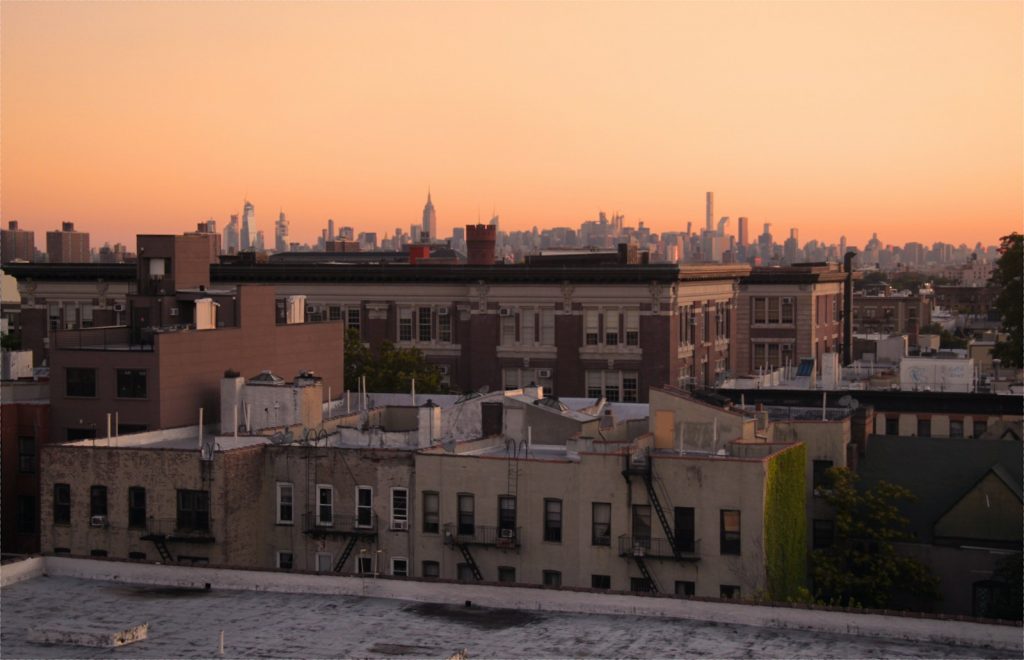
Tips for crossing the Brooklyn Bridge
It’s 1.3 miles across the river so walking the Brooklyn Bridge will take 20 minutes or more, depending on how fast you walk and how many times you stop for photos.
Note the white line running down the center of the promenade. One side is designated for pedestrians (facing Brooklyn, on the right) and the other for cyclists. Straying into the bike lane will usually lead to a snarky encounter with a cyclist, but can also be quite dangerous (some bike defiantly fast). If you cross for a photo, always look both ways.
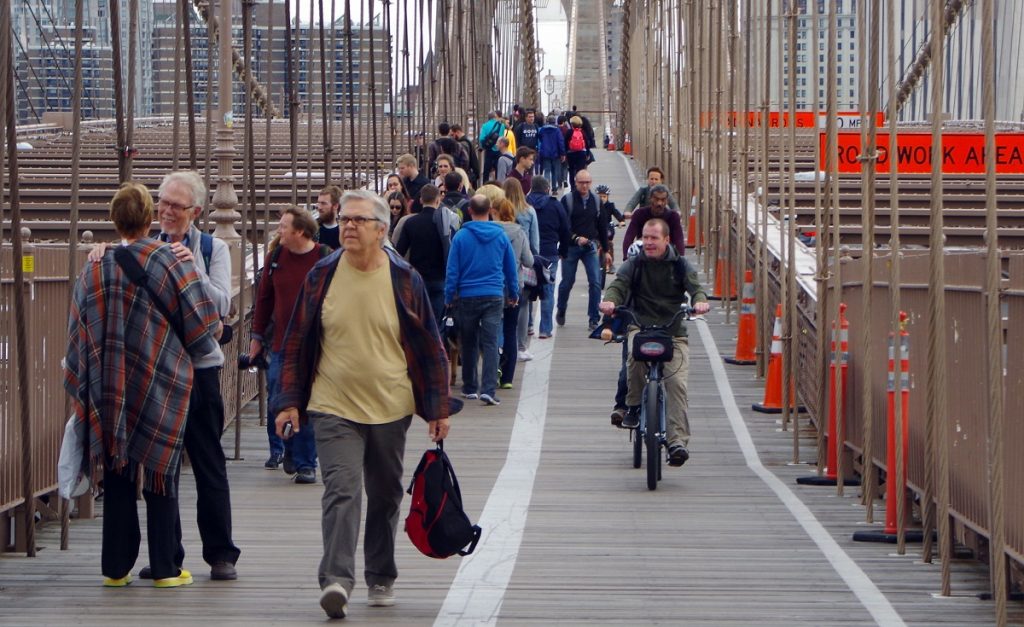
What to see at the Brooklyn Bridge
Walking across the bridge is a wonderful way to see some truly beautiful views of the city, but the bridge itself has several surprises.
If you start at the Manhattan side, you’ll take the concrete ramp to the original wooden slats of the pedestrian promenade, which you can peer down and see (though, people who have a fear of heights might not enjoy this).
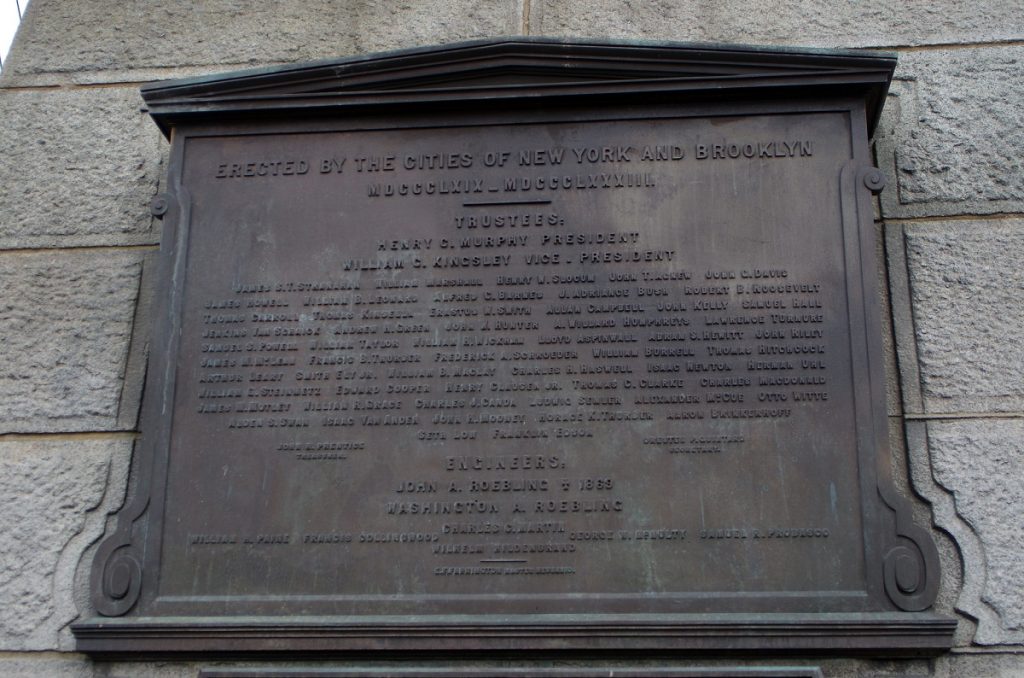
As you near the towers on both ends of the bridge, take time to look at the series of engraved plaques that detail the construction of the bridge. Also, note the date at the top of the Manhattan tower is 1875. At the Brooklyn-side tower, there are more plaques that point out sights visible along the Manhattan skyline. As you progress, grasp one of the metal suspenders, still strong after 130 years!
The history of the bridge and its architectural splendor are definitely spectacular. However, the incredible views from the Brooklyn Bridge are what you will most likely remember about your time here.
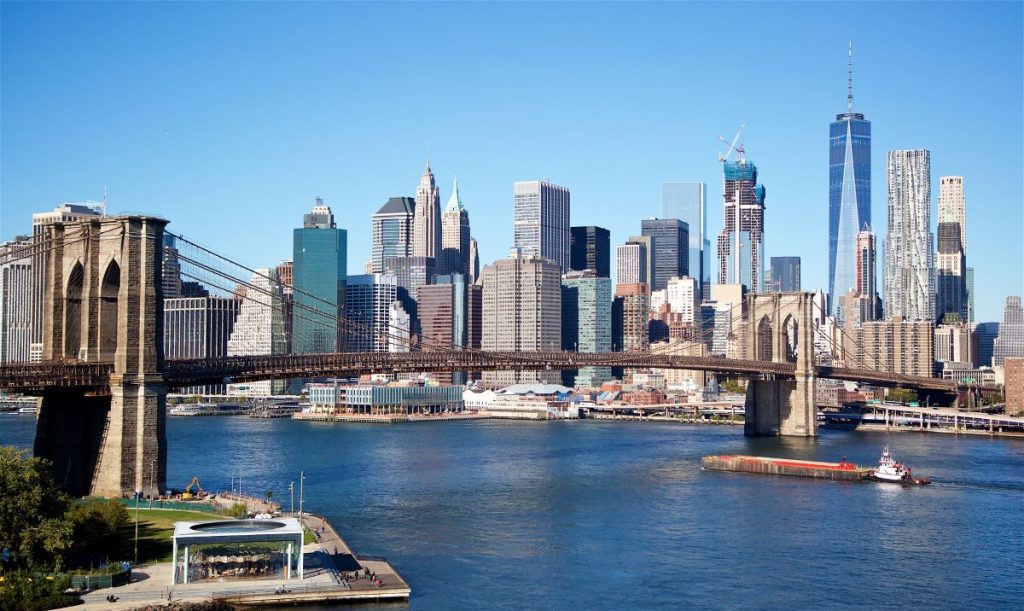
Midway between the towers is where you want to stop and take in the best views.
To the south are Governor’s Island, the Statue of Liberty, and New York Harbor. To the north is the Manhattan Bridge (you may see the subway running underneath), and the midtown Manhattan skyline, including the Empire State Building and the Chrysler Building.
Insider’s Tip: If you need some help planning your visit to NYC, check out our tips for visiting the Empire State Building.
Visiting Brooklyn Bridge Park
After passing the Brooklyn tower, you’ll see Brooklyn Bridge Park. There are spectacular views of the bridge and Manhattan skyline from both the Brooklyn Heights (south) and DUMBO (north) sections of the park.
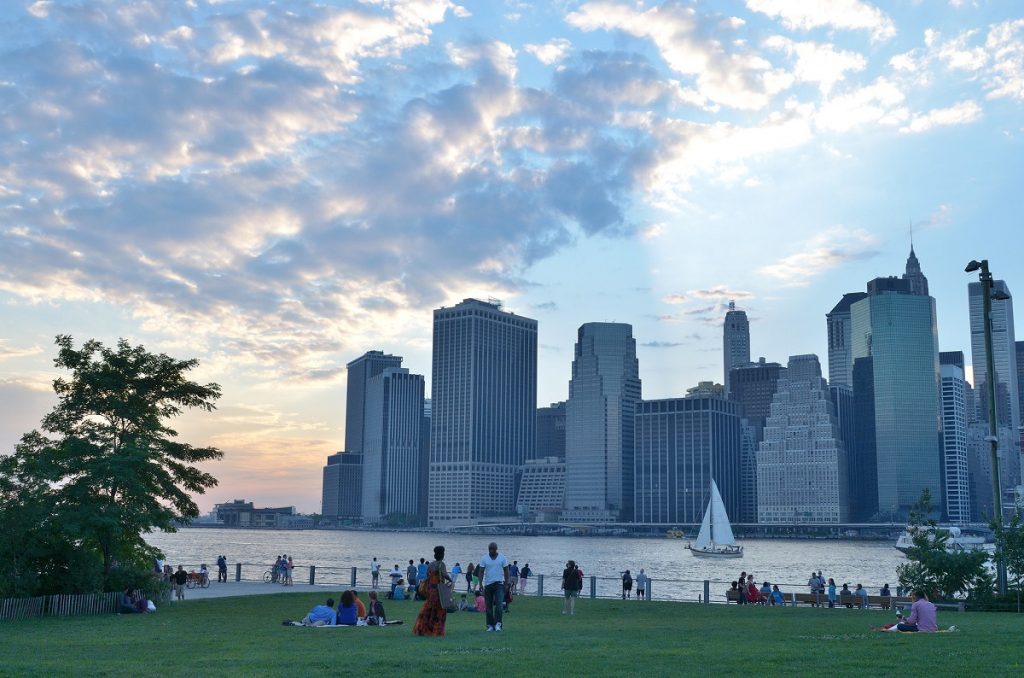
Insider’s Tips:
- You could spend an entire day in Brooklyn Bridge Park. The massive green space hosts various cultural activities throughout the year. Check out our tips on how to make the most out of a visit to Brooklyn Bridge Park.
- In warm weather, a great alternative to the subway is the New York Water Taxi from Fulton Ferry/Brooklyn Bridge Park.
Trivia about the Brooklyn Bridge
- The Brooklyn Bridge cost $15.1 million to build (more than double what was originally projected).
- On the bridge’s opening day, nearly 2,000 vehicles, and more than 150,000 pedestrians, crossed. They turned walking the Brooklyn Bridge into an instant icon of the city.
- The bridge was so technically ahead of it time many could not believe it was safe. Just a week after opening, 20,000 people were strolling on the bridge when a young woman tripped. Someone screamed the bridge was falling, and in the ensuing panic, 12 people were crushed to death while hundreds were trampled in the stampede.
- In 1884, to prove the bridge’s stability, P.T. Barnum paraded 21 elephants across the promenade.
- On July 23, 1886, Robert E. Odlum, a swimming teacher, became the first person to jump from the Brooklyn Bridge. Despite surviving the pre-announced jump, he later succumbed to internal injuries.
- As the workers dug deeper into the riverbed using caissons, they, often called sandhogs, experienced severe health issues from caisson disease. This led to construction being stopped 30 feet (10m) above the bedrock for the Manhattan tower, which is supported by sand.
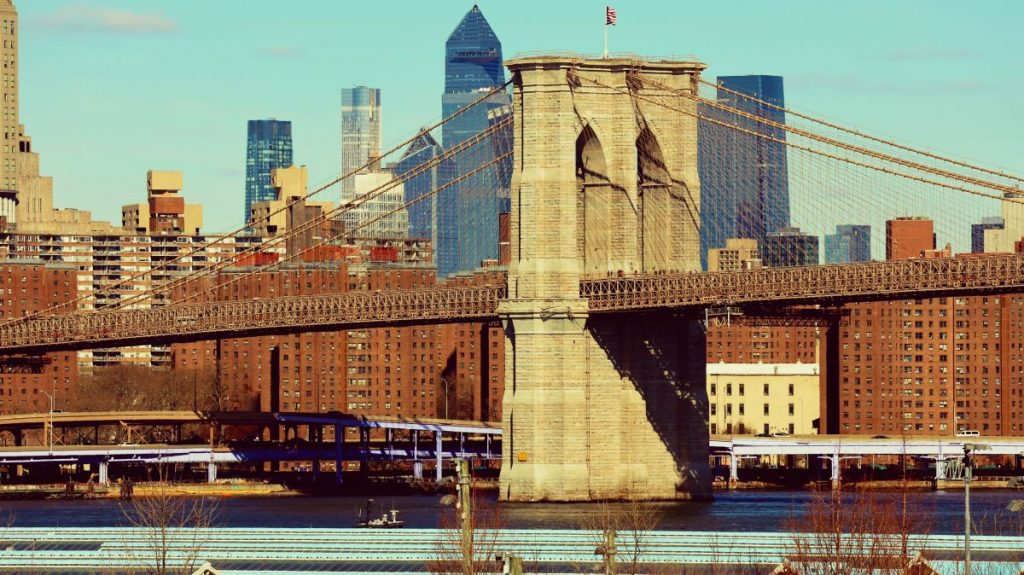
Update Notice: This post post was updated on January 30, 2024.
Making the most out of a trip to NYC can be quite daunting if you try to do it all on your own. Why not check out a few of our most popular tours such as our guided ferry tour to Statue of Liberty + Ellis Island. Join us!



